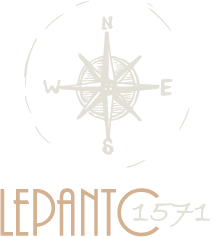Late Byzantine period
After the fall of Cosntantinople to the Franks in 1204, Naupaktos passed for a brief period within the control of Venetians and, with the treaty of 1210, it is ceded to the Despot of Hepirus Michael I Angelos Doukas Komnenos. It is probably the best-documented period for the history of the city, due to two charismatic figures who occupied the episcopal see in the end of the 12th and the beginning of the 13th century: Konstantinos Manasses and Ioannis Apokaukos. Related to each other (uncle and nephew respectively) both of them were particularly literate and enlightened personalities, apart from being clergymen. Apokaukos, in partiuclar, is an important source for the situation in the region of Naupaktia at the beginning of the 13th century. The picture he draws is bleak: the population had diminished and many people had emigrated elsewhere due to natural disasters as well as to pirates' raids. Attacks from the Franks of the Peloponnese were quite frequent and, in 1218, led to a partial destruction of the fortifications of the city of Naupaktos. Additional taxes on behalf of the Despot of Hepirus worsened the situation and led to the enfeeblement of economy and agricultural production. In many letters Apokaukos pleaded for tax alleviations as the burdens had become unbearable both for the population and for the metropolitan bishopric itself. In 1294 Nicephoros I Angelos Doukas Komnenos offers Naupaktos as a dowry to Philip I of Tarentum, member of the Anjou dynasty, who consolidated their presence in this region for about a century.
Νόμισμα του Φιλίππου του Ταραντινού
Constantinos Manasses
Constantinos Manasses was a great ecclesiastical personality of the 12th century and one of the most prominent Byzantine chroniclers. He was born in 1130 (or 1120 according to some scholars). He was still quite young when he wrote the “Synopsis of Time”, a chronicle consisting of 6733 verses and referring to the period from the creation of the earth to the death of Nicephoros Votaneiatis in 1081. He was the author of other literary and ecclesiastical works as well, such as the Life of Oppianus (verse), a travelogue based on his journey to Jerusalem in 1160, the cosmological treatise Στίχοι συνοψίζοντες τα προχειρότερα περί των αστέρων and the similar Στίχοι εις την κοσμοποιίαν etc. His choice of topics attests to a broad spectrum of interests and admiration for antiquity. He was ordained metropolitan bishop of Naupaktos in 1172 and he died at about 1187.Ioannis Apokaukos
Ioannis Apokaukos was the nephew of the Metrpolitan bishop of Naupaktos Constantine Manasses, who pushed him towards a clerical career. He was ordained Metropolitan bishop of Naupaktos in 1199 or 1200 and he remained in position until 1232, when he was forced to abdicate. In those days the metrpolitan see of Naupaktos was one of the largest and most powerful in Greece, as it comprised the bishoprics of Aetos, Dragamesto, Arta, Acheloos, Vela, Butrinto, Bounditza, Dryinoupolis, Ioannina, Rogae and Cheimarra, thus extending from Aetoloakarnania up to present-day southern Albania. However, the defeat of the Despot of Epirus Theodoros Komnenos Doukas at Klokotnitsa in 1230 created new metropolitan bishoprics as well as new pressures from the Patriarch, who now had his see in Nicaea. These new conditions forced Apokaukos to abdicate and retreat in a monastery, where he died in 1233 or 1234. Apokaukos was a prolific writer and preserved a lot of information about his time as well as about the region of Naupaktos in synodical acts, letters and sermons. Therefore he constitutes one of the main sources for the history of Mainland Greece in the Late Byzantine period.
Σελίδα από χειρόγραφο που διασώζει τη "Χρονική Σύνοψη" του Κωνσταντίνου Μανασσή
